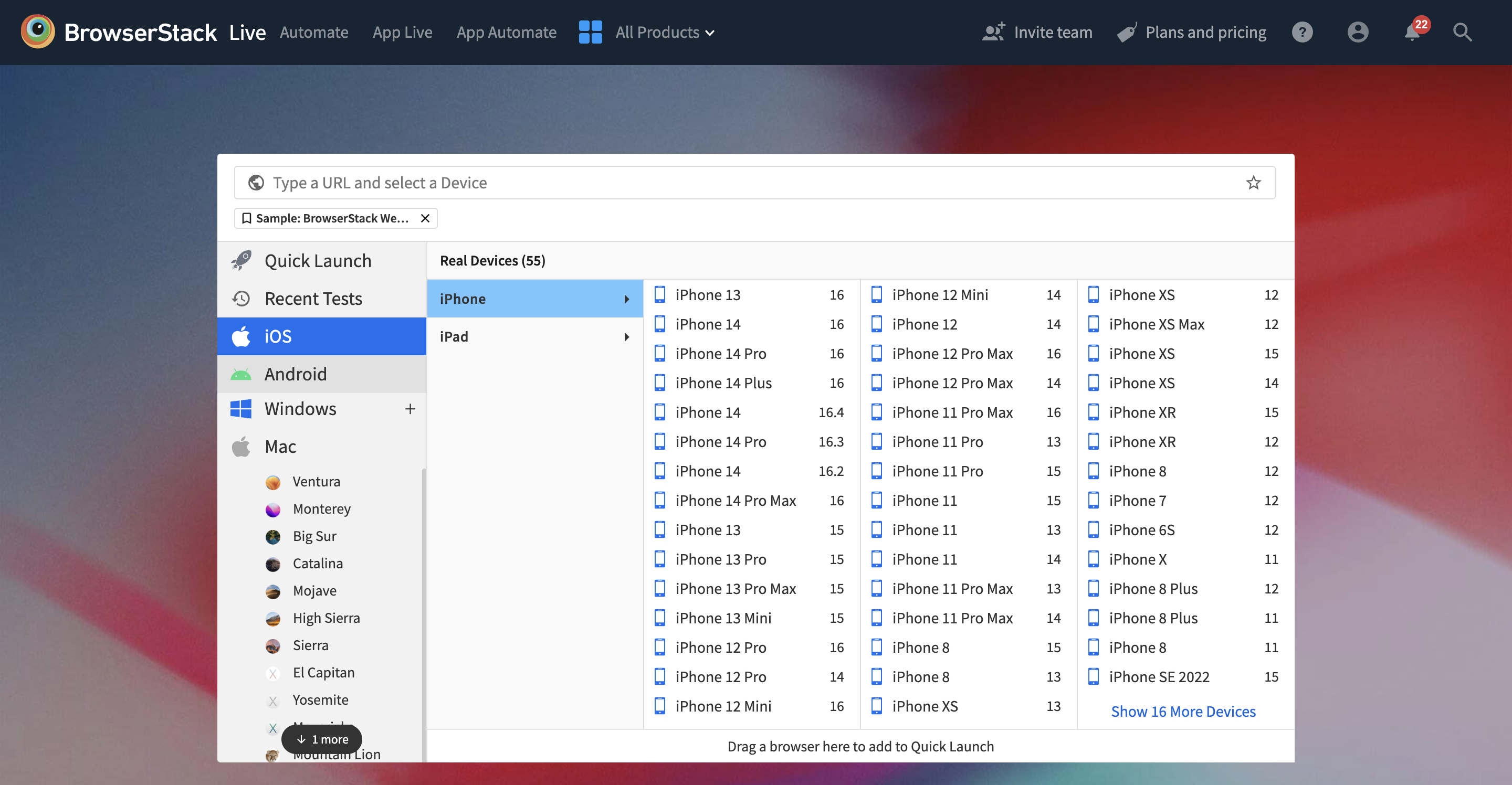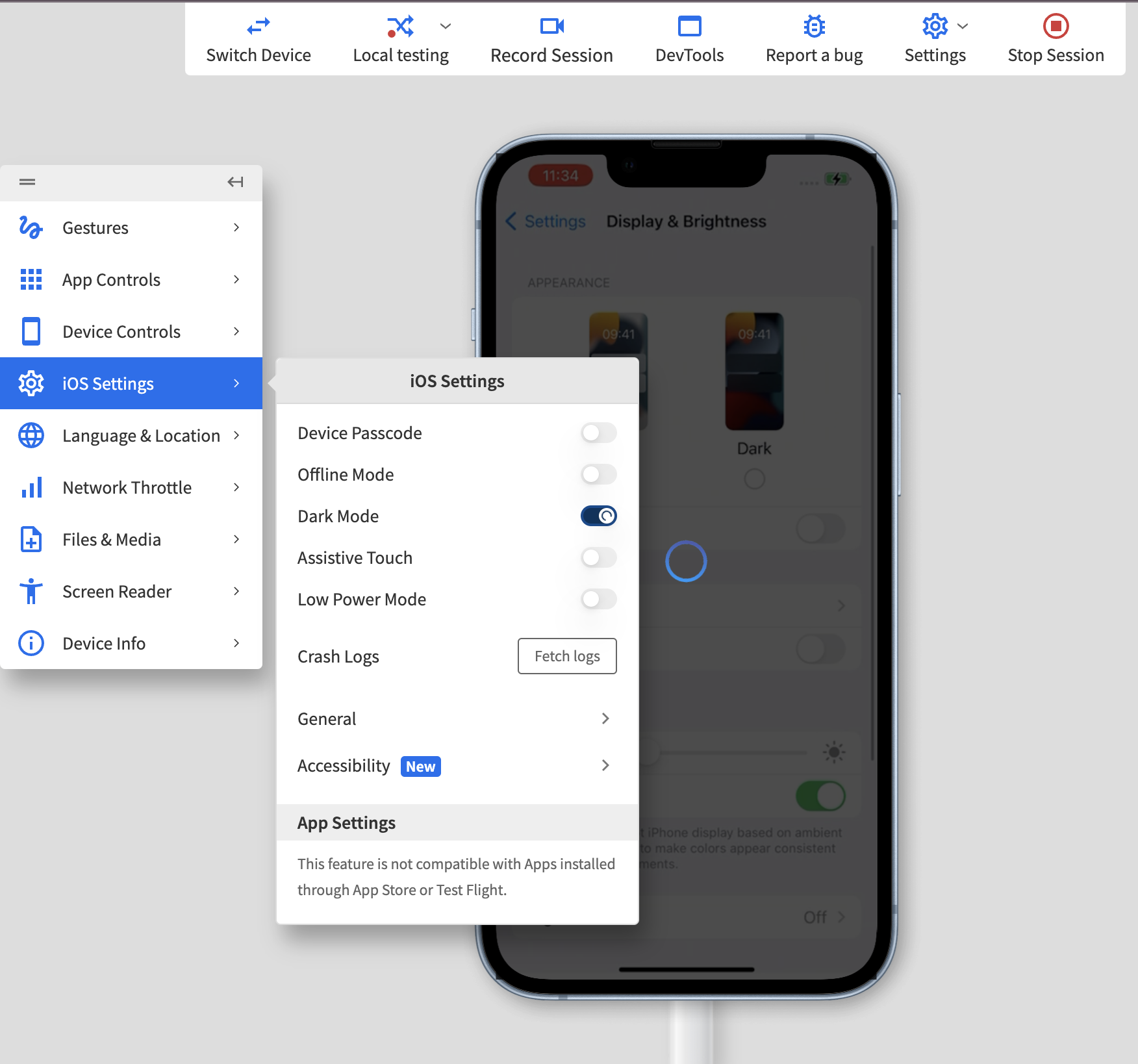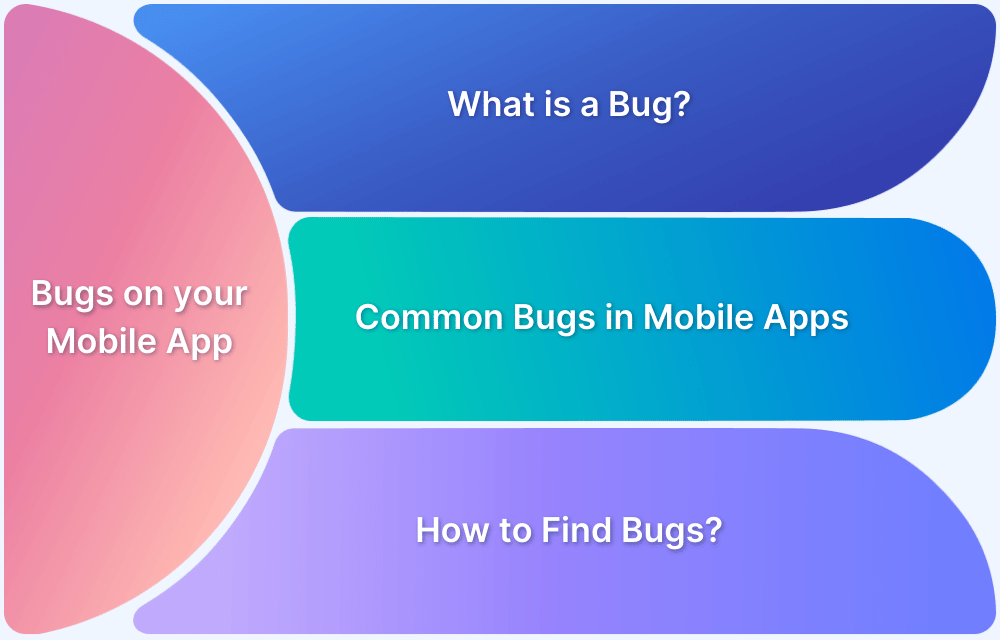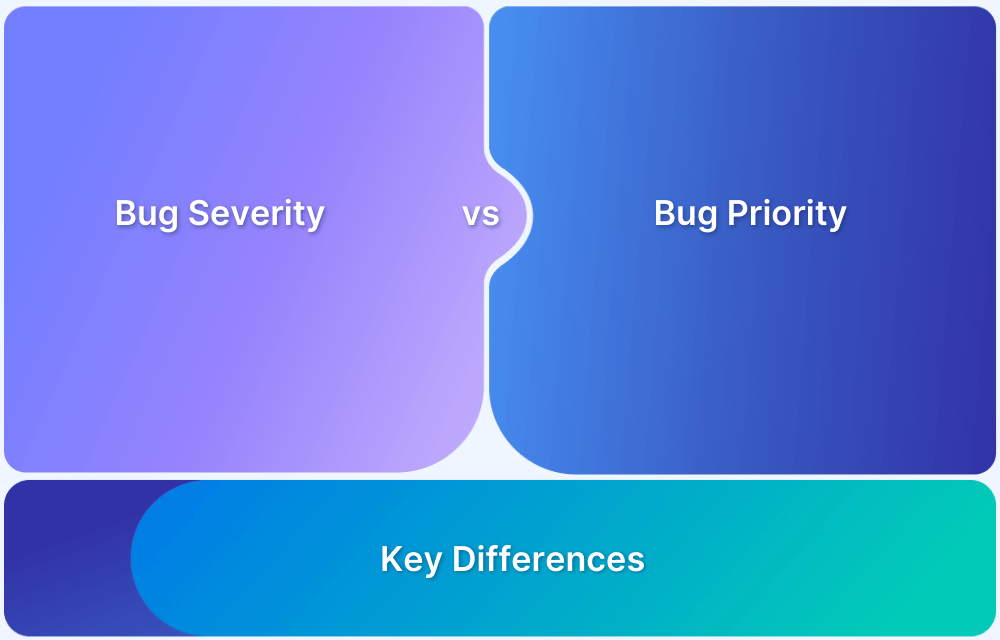Finding bugs in software is a critical step in ensuring quality and reliability. Testers use different techniques to identify defects early, resolve them quickly, and deliver stable releases.
Overview
How to Find Bugs in Software & Resolve Them Efficiently?
- Quick Attacks: Use invalid inputs to expose hidden defects
- Quality Goals: Align tests with business & user priorities
- Real Devices: Test on latest + older devices under real conditions
- Test Environment: Stabilize infra to avoid false bugs
- Pareto Rule (80/20): Focus on modules where bugs cluster
- Research: Understand specs, collaborate with devs, test like a user
- Tools: Real Device Cloud, parallel testing, local/staging testing, observability & dashboards
How to Develop Bottom-Up Goals for Software Bug Improvement?
- Identify issues from reports & feedback
- Prioritize by severity, frequency, impact
- Analyze root causes with devs/testers
- Set realistic deadlines
- Track fixes in bug/project tools
- Foster collaboration & communication
- Continuously refine process
This practical guide helps uncover bugs faster, focus on critical modules, and build a structured cycle of bug identification, prioritization, and resolution with modern testing tools.
How to find Bugs in Software Applications?
1. Quick Attacks
Imagine that a tester has to quality-check a system without any requirements. Without formal requirements, it is challenging to create structured test scenarios. In this case, the best bet is to “attack” the system, AKA causing the software to “panic” by feeding it wrong input values.
For example, leave a few required fields blank, disrupt UI workflows, enter numbers when users are supposed to enter words, exceed character limits, use disallowed characters, and enter too many incorrect passwords – the works.
- The logic behind these attacks is to perform quick software analyses within a limited duration.
- They allow the tester to rapidly evaluate the nature of the software based on the error messages and bugs showing up.
- If multiple bugs show up, assume that there are defects in the main functionalities.
- Conversely, the lack of bugs with this method usually means that the happy path functionality is in decent shape.
Remember that these quick attacks must be imposed in real user conditions. That means when someone is testing their software with unpredictable input and actions, they’ll have to do it in an environment that completely matches end-user conditions.
2. Set Goals for Software Quality
When a tester knows the standards to which software needs to be held, they will better know what bugs to look for. If a tester is wondering how to find bugs in websites, a good place to start is to gain clarity on what the website is expected to provide in terms of user experience. Consider the following, to begin with:
- Just ask the QA manager if a goals document exists
- Do a little research to find any statements published by the organization or senior personnel on what they prioritize
Clarity on goals helps QAs devise test scenarios and cases accordingly. All features and functions do not require the same measure of focus. Start by testing features that affect or matter to the most significant number of users.
3. Test on Real Devices
The tester’s primary job is to execute tests faster without compromising on the accuracy of results. That is impossible to achieve without using real browsers and devices for testing. Remember that emulators and simulators cannot provide real-world conditions for comprehensive software tests.
- Whether manual testing or automated Selenium testing, real devices are non-negotiable in the testing equation.
- The device pool for testing must include not just the latest devices but also older devices still active in the market.
- Since one can’t know which device will be used to access a website or app in a highly fragmented landscape, the more devices one can run tests on, the better.
- Without a Real Device Cloud like BrowserStack, monitoring how a website or app fares is impossible in line with geolocation testing, low battery life, incoming calls, and multiple other features.
- Run manual and automated tests on real browsers and devices. Start testing 3000+ real browsers and devices on BrowserStack’s real device cloud.
- Run parallel tests on a Cloud Selenium Grid for faster results without compromising accuracy.
Use multiple essential features – geolocation testing, dark mode, offline mode, accessibility testing, testing in dev environments, real-time debugging, and more – to ferret out any bugs and ensure users do not find them in the real world.
4. Pay attention to the Test Environment
Usually, testers have some time to prepare scenarios, determine timelines, and establish procedures. This time should also include an evaluation of the test infrastructure AKA the test environment. This is because flaws in the environment will cause unnecessary and entirely avoidable delays in generating test results. It can also lead to the emergence of bugs that aren’t caused by the software itself.
There are few things more annoying than dealing with setup-related defects that cannot be fixed from a code perspective. Usually, the actual source of the bug is not identified immediately, thus the delay.
Read More: Test Environment: A Beginner’s Guide
Imagine the plight of a tester who finds and files a bug, but when the developer examines it, no issues can be found in the code. So, while the dev is googling “how to find bugs in code” in utter frustration, the test cannot progress because the apparent “bug” cannot be fixed.
- In setup anomalies, the same test can generate different results every time. This makes it difficult to replicate the defect, which is the very definition of a developer’s nightmare.
- Take the time to stabilize the test infrastructure, as it goes a long way in preventing these woes.
- Consider testing a website on real browsers and devices while running on a development or staging environment. This is easily possible with BrowserStack’s Local Testing feature, which allows QAs to test work-in-progress mobile and web apps at scale without hosting them on public staging environments.
5. Use the Pareto Principle
The Pareto Principle states that 20% of efforts generate 80% results and that 80% of steps outside the necessary 20% bring much lower results. The principle was put forth by Vilfredo Pareto, an Italian economist who concluded that 80% of all Italian property belonged to 20% of the population. He also suggested that this statistic can be applied to multiple other areas.
In software testing, Pareto Principle can be translated to – 80% of bugs found in 20% of program modules. Don’t take those numbers literally; what it means is that bugs are not distributed equally throughout the software. They tend to cluster in certain code sections with severe defects.
To apply the Pareto Principle, try the following:
- Sort out bugs by causes, not effects. Instead of categorizing bugs by how they are causing the software to malfunction, categorize them by what causes them to occur. This method is cleaner because it will highlight which module is the proverbial 20%.
- Communicate with developers to create new categories for bugs. Since they created the software, they would better understand its various components.
- Look for problem areas in the code rather than singular bugs.
- Take account of user feedback as they would best know which parts of the website or app are most error-prone and disruptive.
With BrowserStack’s Test Management, create, manage, and track your manual and automated test cases on a powerful dashboard. Say goodbye to scattered testing efforts. Easily track test cases & test runs through two-way binding via the Jira app & have any changes reflected effortlessly in Test Management.
6. Do your Research
- QAs need to be familiar with the software they are testing. With adequate knowledge of how a feature is supposed to work and how it is expected to behave, it is challenging to decide what constitutes a defect.
- If testers are not part of technical HLD review meetings, they can still interact with developers and seek a copy of relevant documents to study particular features. Additionally, try to meet with developers to discuss product technicalities.
- Focus on the customers’ perspective. Consider what a customer would expect from the software when wondering how to find app bugs.
How to Develop Bottom-Up Goals for Software Bug Improvement?
Developing bottom-up goals for software bug improvement involves a systematic approach to identifying and addressing specific issues within the software. Here are the key steps to go about it:
- Bug Identification: Start by identifying the specific bugs or issues from bug reports and user feedback to create a comprehensive list of bugs.
- Bug Prioritization: Prioritize the identified bugs based on severity, user impact, frequency of occurrence, and business priorities. Focus on high-priority bugs.
- Bug Analysis: Analyze each bug to understand its root cause and underlying factors. This may involve reviewing code, conducting debugging sessions, examining system logs, and collaborating with developers and testers.
- Timeframe/Deadlines: Define deadlines for each task, ensuring they are realistic and achievable within the given timeframe. Consider factors such as development cycles, resource availability, and other ongoing projects.
- Implementation and Tracking: Use project management tools and bug-tracking systems to keep track of tasks, assignees, and their progress.
- Collaboration and Communication: Foster collaboration/communication between developers, testers, and other stakeholders. Encourage open discussions, share progress updates, and provide a platform for reporting and discussing challenges or roadblocks.
- Continuous Improvement: Evaluate their effectiveness as bug fixes and improvements are implemented. Continuously learn from the bug improvement process to refine goals, strategies, and practices for future bug management.
Like every other aspect of software development, there are best practices that accelerate the QA process and make it more effective. So, before wondering how to find bugs in software in the middle of a test cycle, try implementing the steps detailed here.








